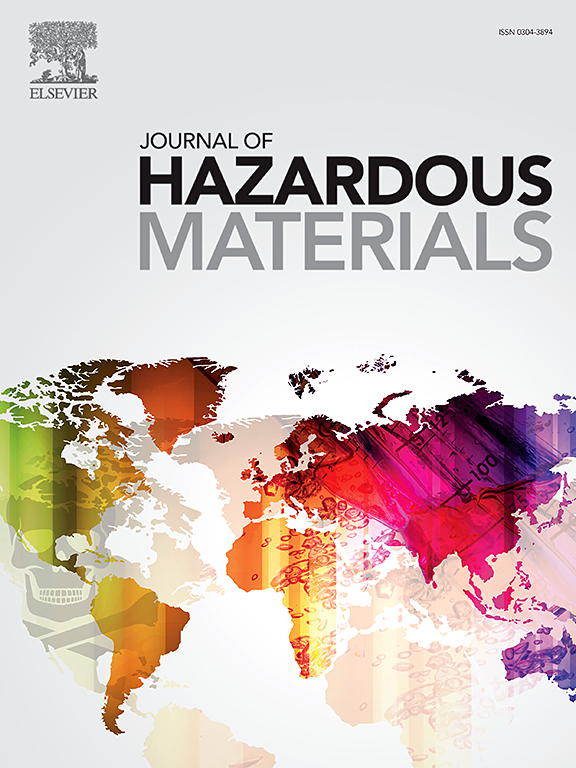Converting Building Waste Soil into GIS Zeolite to Remediate Cd-Polluted Soil
IF 11.3
1区 环境科学与生态学
Q1 ENGINEERING, ENVIRONMENTAL
引用次数: 0
Abstract
The massive output of building waste soil poses a significant challenge to urban sustainable development. However, high-efficiency building waste soil recycling solutions are extremely scarce. Meanwhile, as a significant environmental hazard, Cd-contaminated soil has posed severe threats to public health. This work demonstrates a sustainable strategy to transform multiple building waste soils into low-cost and nontoxic GIS-type zeolite for Cd-contaminated soil remediation. Leveraging the high adaptability and flexibility of GIS-zeolite’s crystallization properties, this "soil-to-GIS-zeolite" conversion process is simple, reliable, and highly universal, exerting high atom conversion rates of 87.28% for Al and 78.75% for Si, efficiently decreasing the raw materials cost and energy consumption. Notably, the GIS-zeolite exhibits remarkable Cd stabilization ability for soil remediation, effectively reducing the exchangeable Cd species in soil from 41.4% down to 21.3% with only a 0.3% GIS-zeolite addition. Mechanistic studies reveal that GIS-zeolite could fast capture Cd2+ via surface chemisorption and gradually lock Cd2+ into its framework via Na⁺ release. Overall, this study proposes a sustainable approach to advancing construction waste soil recycling, GIS-zeolite synthesis, and Cd pollution control. Furthermore, it demonstrates the huge potential of soil resources for zeolite synthesis and environmental protection, which has been heavily ignored before.

建筑废土转化为GIS沸石修复cd污染土壤
建筑废土的大量产生对城市可持续发展提出了重大挑战。然而,高效的建筑废土回收解决方案极其稀缺。同时,cd污染土壤作为一种重大环境危害,对公众健康构成严重威胁。本研究展示了将多种建筑废弃土壤转化为低成本、无毒的gis型沸石用于cd污染土壤修复的可持续策略。利用gis -沸石结晶特性的高适应性和灵活性,“土壤- gis -沸石”转化过程简单、可靠、通用性强,铝原子转化率高达87.28%,硅原子转化率高达78.75%,有效降低了原材料成本和能耗。值得注意的是,gis -沸石在土壤修复中表现出显著的Cd稳定能力,仅添加0.3%的gis -沸石就能有效地将土壤中可交换Cd种类从41.4%降低到21.3%。机理研究表明,gis -沸石可以通过表面化学吸附快速捕获Cd2+,并通过Na +释放逐渐将Cd2+锁在其框架中。总体而言,本研究提出了推进建筑垃圾土壤循环利用、gis -沸石合成和Cd污染控制的可持续途径。进一步证明了土壤资源在沸石合成和环境保护方面的巨大潜力,这在以前被严重忽视。
本文章由计算机程序翻译,如有差异,请以英文原文为准。
求助全文
约1分钟内获得全文
求助全文
来源期刊

Journal of Hazardous Materials
工程技术-工程:环境
CiteScore
25.40
自引率
5.90%
发文量
3059
审稿时长
58 days
期刊介绍:
The Journal of Hazardous Materials serves as a global platform for promoting cutting-edge research in the field of Environmental Science and Engineering. Our publication features a wide range of articles, including full-length research papers, review articles, and perspectives, with the aim of enhancing our understanding of the dangers and risks associated with various materials concerning public health and the environment. It is important to note that the term "environmental contaminants" refers specifically to substances that pose hazardous effects through contamination, while excluding those that do not have such impacts on the environment or human health. Moreover, we emphasize the distinction between wastes and hazardous materials in order to provide further clarity on the scope of the journal. We have a keen interest in exploring specific compounds and microbial agents that have adverse effects on the environment.
 求助内容:
求助内容: 应助结果提醒方式:
应助结果提醒方式:


